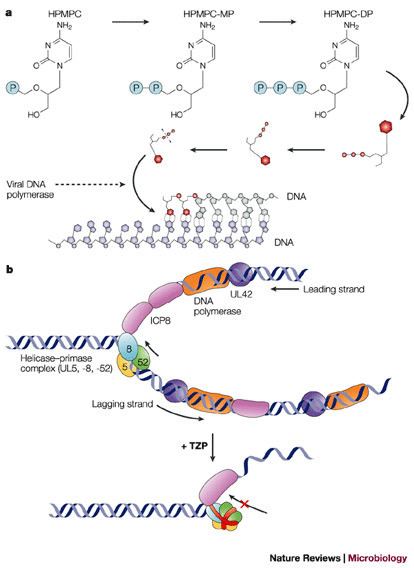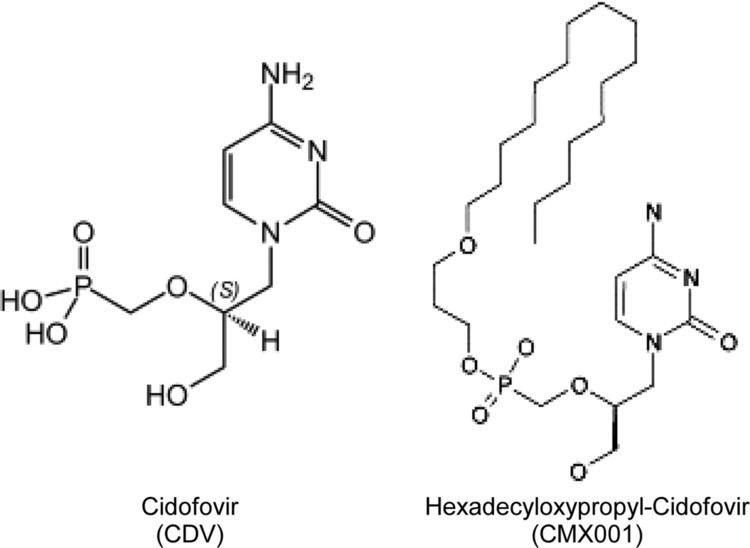Trade names Vistide Routes ofadministration IV CAS ID 113852-37-2 | AHFS/Drugs.com Monograph ATC code J05AB12 (WHO) Molar mass 279.187 g/mol | |
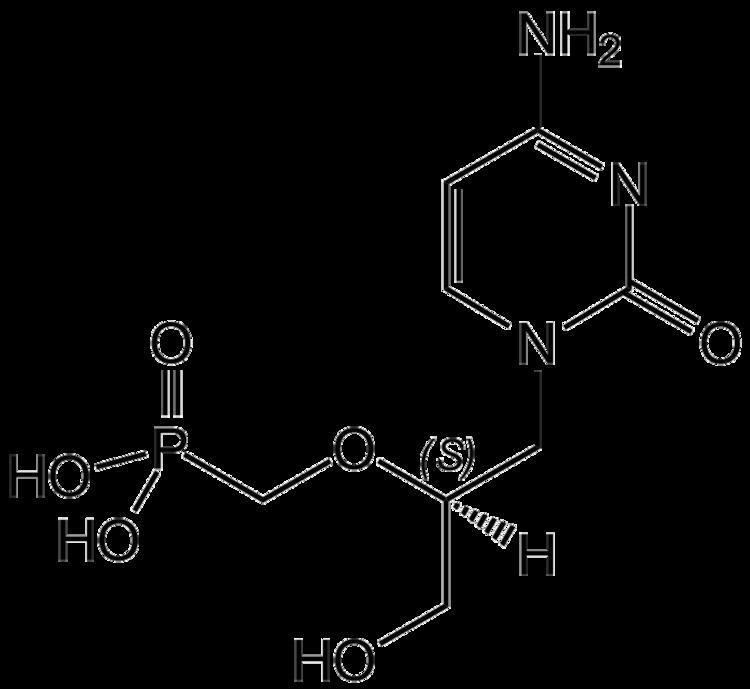 | ||
License data EU EMA: VistideUS FDA: Cidofovir Pregnancycategory AU: DUS: C (Risk not ruled out) | ||
Cidofovir (brand name Vistide) is an injectable antiviral medication primarily used as a treatment for cytomegalovirus (CMV) retinitis (an infection of the retina of the eye) in people with AIDS.
Contents
- DNA virus
- Other
- Administration
- Side effects
- Contraindications
- Interactions
- Mechanism of action
- History
- Synthesis
- References

Cidofovir was approved for medical use in 1996.
DNA virus
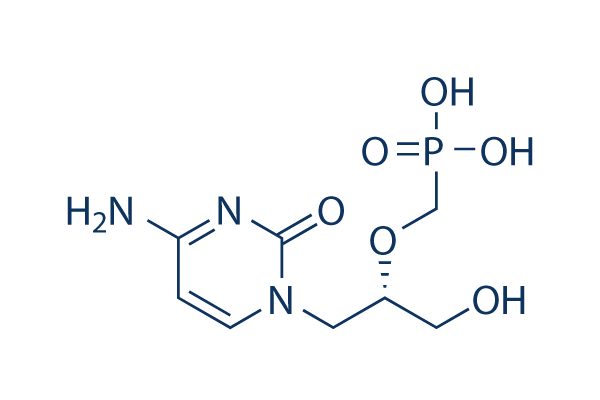
Its only indication that has received regulatory approval worldwide is cytomegalovirus retinitis. Cidofovir has also shown efficacy in the treatment of aciclovir-resistant HSV infections. Cidofovir has also been investigated as a treatment for progressive multifocal leukoencephalopathy with successful case reports of its use. Despite this, the drug failed to demonstrate any efficacy in controlled studies. Cidofovir might have anti-smallpox efficacy and might be used on a limited basis in the event of a bioterror incident involving smallpox cases. Brincidofovir, a cidofovir derivative with much higher activity against smallpox that can be taken orally has been developed. It has inhibitory effects on varicella-zoster virus replication in vitro although no clinical trials have been done to date, likely due to the abundance of safer alternatives such as aciclovir. Cidofovir shows anti-BK virus activity in a subgroup of transplant recipients. Cidofovir is being investigated as a complementary intralesional therapy against papillomatosis caused by HPV.

It first received FDA approval on the 26th of June 1996, TGA approval on the 30th of April 1998 and EMA approval on the 23rd of April 1997.
Other
It has been suggested as an antitumour agent, due to its suppression of FGF2.
Administration

Cidofovir is only available as an intravenous formulation. Cidofovir is to be administered with probenecid to help mitigate harm and decrease side effects to the kidney. Probenecid works to mitigate nephrotoxicity by inhibiting organic anion transport of the proximal tubule epithelial cells of the kidney. In addition, hydration must be administered to patients receiving cidofovir. 1 liter of normal saline is recommended in conjunction with each dose of cidofovir.
Side effects
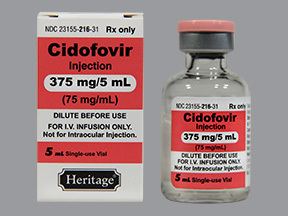
The major dose-limiting side effect of cidofovir is nephrotoxicity (that is, kidney damage). Other common side effects (occurring in >1% of people treated with the drug) include:
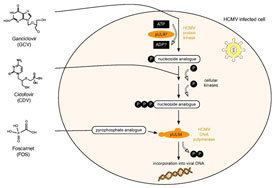
Whereas uncommon side effects include: anaemia and elevated liver enzymes and rare side effects include: tachycardia and Fanconi syndrome. Probenecid (a uricosuric drug) and intravenous saline should always be administered with each cidofovir infusion to prevent this nephrotoxicity.
Contraindications
Hypersensitivity to cidofovir or probenecid (as probenecid needs to be given concurrently to avoid nephrotoxicity).
Interactions
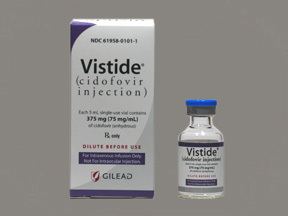
It is known to interact with nephrotoxic agents (e.g. amphotericin B, foscarnet, IV aminoglycosides, IV pentamide, vancomycin, tacrolimus, non-steroid anti-inflammatory drugs, etc.) to increase their nephrotoxic potential. As it must be given concurrently with probenecid it is advised that drugs that are known to interact with probenecid (e.g. drugs that probenecid interferes with the renal tubular secretion of, such as paracetamol, aciclovir, aminosalicylic acid, etc.) are also withheld.
Mechanism of action
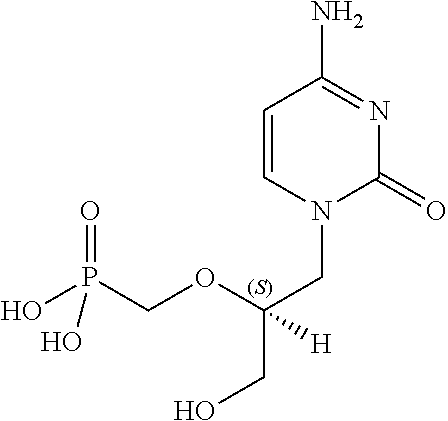
Its active metabolite, cidofovir diphosphate, inhibits viral replication by selectively inhibiting viral DNA polymerases. It also inhibits human polymerases but this action is 8-600 times weaker than its actions on viral DNA polymerases. It also incorporates itself into viral DNA hence inhibiting viral DNA synthesis during reproduction.
It possesses in vitro activity against the following viruses:
History

Cidofovir was discovered at the Institute of Organic Chemistry and Biochemistry, Prague, by Antonín Holý, and developed by Gilead Sciences and is marketed with the brand name Vistide by Gilead in the USA, and by Pfizer elsewhere.
Synthesis
Cidofovir can be synthesized from a pyrimidone derivative and a protected derivative of glycidol.
